PPMC-Transport is supported by its audience. When you buy through our links, we may earn an affiliate commission. Learn more
Written by Steven Schiller
Fact checked by Henry Speciale
Overinflating your tire results in tread wear, a bouncy ride, and the risk of a tire blowout. That’s why we need to adhere to the required psi for our type of tires.
In many cases, we also need to deflate our tires quickly to repair or move the vehicle. Therefore, it is important to know how to let air out of a tire.
Read the detailed guide below
Table of Contents
There are two ways to remove air from a tire using a screwdriver or needle-nose pliers.
If you want to let air out of tire fast, unscrew the valve or metal pin. Then, please put it back once you reach the ideal tire pressure.
Don’t forget to reattach the cap because it protects the valve from dirt.
You need to detach the cap first to find the metal pin.
Then, use a flathead screwdriver or needle-nose pliers to press the tip of the metal pin inward to release air from tire.
The air shoots out of the valve as long as you apply pressure on the pin. It stops the moment you lift the screwdriver.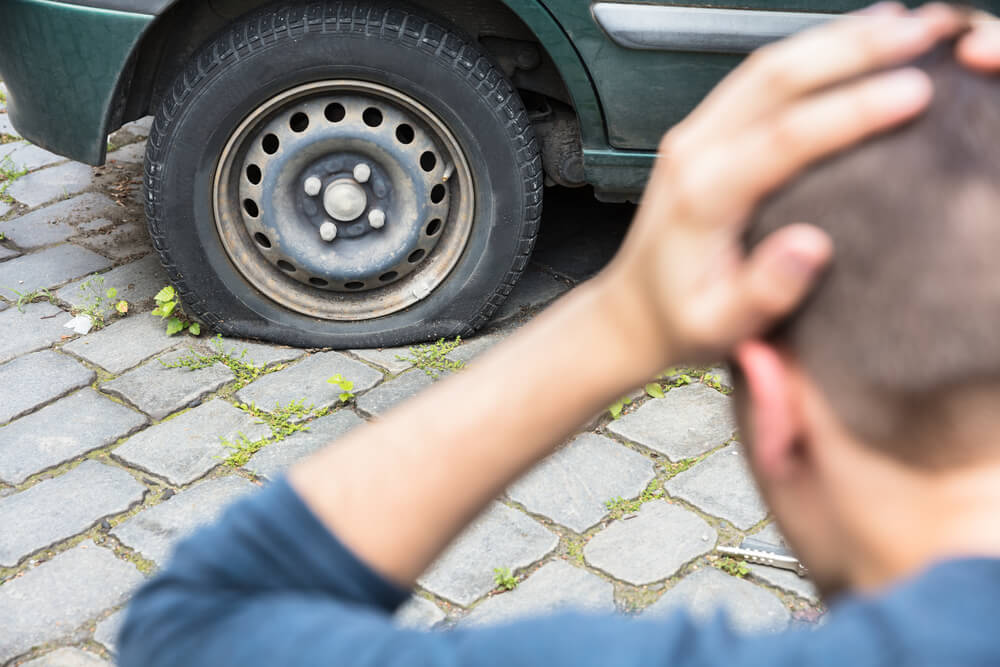
Therefore, stop pressing the pin when you reach the ideal tire pressure.
A tire deflator is a brass plated device that lets you remove air from a tire more conveniently.
You can configure four tire deflators to your tire’s ideal PSI and simultaneously take the air out of all your car or truck tires.
Tire deflators are ideal if you have always been a victim of letting air out of tires prank. These automatic devices will save you time checking tire pressure and deflating your tire as needed.
To remove air from tire, it is necessary to identify the type of valve used in the vehicle.
The valve stem is a small cylindrical tube controlling the tire’s airflow. It is located in between the spokes of the tire.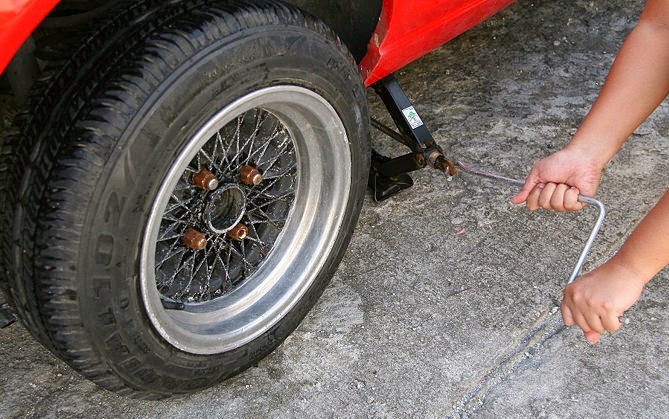 It protrudes on the tire for about 1-2 inches.
It protrudes on the tire for about 1-2 inches.
Some valves do not need tools to take air out of tire.
You can remove the cap from the valve and let it release excess air on its own. You can hear a hissing sound when it starts.
Deflating a tire is possible even without screwdriver. However, using the following tools will ensure you reduce tire pressure properly and safely.
A Tire pressure gauge is a tire pressure reading device. Please attach it to the valve before and after deflating a tire to ensure the required pressure range.
For instance, if you are stuck on sand or mud, you can get out of it without a tool by releasing about half the air in the tires.
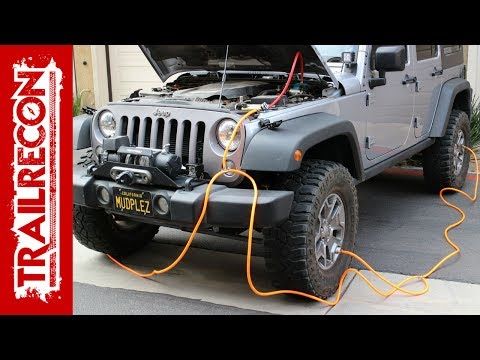 The recommended tire pressure ranges from 32 to 35 psi.
The recommended tire pressure ranges from 32 to 35 psi.However, it is safest to check the PSI recommendation of the vehicle manufacturer because the front and back tires have different PSI requirements.
A lever or hydraulic jack is a mechanical device used to lift the vehicle while deflating all tires. Look for the jack points of the car to mount it. They are located under your vehicle’s chassis, near the front and back tires.
With machine like a jack stand, the car or truck is safe while you let air out of car tire. Jack stands can support the weight of the vehicle while being lifted by hydraulic jacks.
All tires must have the recommended PSI by the car manufacturer regardless of tire brand. The front and back tires have different ideal PSI because of weight while driving.
The PSI recommendation can be found on the sticker inside the driver’s door. If not, check the vehicle’s manual.
If possible, write down the psi of each car tire so you won’t get confused.
Reading the tire pressure with a tire gauge does not let the air out. Instead, the tire pressure gauge has a small knob or plunger at the back part of it to inflate it.
Letting air out of hot tires is unsafe. When tires are inflated by heat, and you release the extra hot pressure, it may cause the tire to blow or catch fire. In this connection, it is advised to stop driving when the tires are too hot to touch and wait for them to cool down overnight or park for at least two hours at gas station.
https://youtu.be/v2nJQ7l_nf4
Knowing how to let air out of a tire with or without tools is a good skill that drivers should not overlook because it can guarantee safe travel and longer service life for tires.
It would be great to invest in a tire pressure gauge to check your tire pressure regularly anywhere.
If you want to know more about the causes of tire overinflation, don’t hesitate to ask questions.
Categories FAQsI'm Henry, the content writer for PPMC Transport. We build our site entirely on experience and extensive market and customer research. My goal is to create a trusted platform where people can go to determine what is best for their vehicles in terms of safety and convenience. Keep an eye out for our useful guide!
- Speciale Henry
The notion that overinflated tires make the vehicle more responsive and increase fuel efficiency is pretty illogical. It’s a theory that doesn’t hold water, and if you feel otherwise, you’re always at liberty to give it a shot. If you’re wrong, you can always come back and learn how to deflate a tire.
Every car has an Owner’s Manual. This will tell you what level of tire pressure is appropriate for your car if you’re looking for optimum life and performance. Before we walk you through the steps on how to properly deflate your tires, let’s first look at why automobile experts are against over inflating a tire.
Before we walk you through the steps on how to properly deflate your tires, let’s first look at why automobile experts are against over inflating a tire.
Recommended air pressure levels are determined after taking into account the following factors:
There’s a long list of “Things that can go wrong with an overinflated tire,” but we’re just going to talk about the most obvious ones. The first one being the imminent risk of a tire blowout, which can be very dangerous.
Also, the safety features on your car have been designed in such a way that they’ll only serve you efficiently if the tires’ pressure is at the recommended level. In other words, an overinflated tire undermines the driver’s assistance functions.
Overinflated tires are susceptible to damage. Think of them as overfilled balloons. If they get filled to maximum capacity, they become stiff and inflexible. Thus, exposing them to damage from debris, curbs or potholes.
Think of them as overfilled balloons. If they get filled to maximum capacity, they become stiff and inflexible. Thus, exposing them to damage from debris, curbs or potholes.
Also, no one really enjoys driving around with overinflated tires—you feel every dip and bump in the road.
The general shape of your tires will look distorted if you make a habit out of it. Eventually, the tires will show increased wear and tear and decreased traction. To top it off, there’ll be a noticeable bulge in the tread’s center.
First off, gather the recommended tire pressure checking supplies. Typically, deflating an overinflated car tire is a process that involves two basic steps. First, you need to measure the tire pressure and then release the excess air.
A screwdriver and a tire pressure gauge are the only two things needed to complete both tasks. If you can’t find a screwdriver, look for any relatively sharp and firm tool. Something that you can comfortably use to press the metal pin found inside the tire valve.
Before releasing the air inside the tire, you have to first figure out the current tire pressure. And that’s why the pressure gauge is so important.
A valve stem is the 2-inch long tube located inside the wheel and between the spokes. If you can’t find the valve, use your Owner’s Manual. There has to be a “how to check your air pressure” section in there, with a drawing of a valve and its pin inside.
You’ll never miss a cap on top of any tire valve. All tires have a valve cap, including bicycle tires. To remove the cap, slowly rotate it counterclockwise.
Connecting the air pressure gauge to the metal valves on your vehicle’s tires should not be a problem.
The air pressure gauge has something that resembles a clock. Whatever that “clock” says is the air pressure level inside your tires. If it’s above 40 PSI, you should deflate your tire.
If it’s above 40 PSI, you should deflate your tire.
To release air, you’ll need your trusty screwdriver. Now that you know the valve looks a lot like a single-pin cable connector, all you have to do is reach for that center pin. Press it, and you’ll hear a hissing sound. That’s the excess air coming out.
While deflating the tire, make sure your eyes are always on the air pressure gauge. Otherwise, you’ll inadvertently release more air than you have to.
Don’t forget to cover the valve stem on all your tires once you’re done. Leaving any one of them open will cause a slow leak that results in a flatten tire. So unless you want to find yourself pulling over mid traffic, make sure you replace that cap.
If the goal is to make your tires lose air with a much quicker flow, unscrewing the metal pin inside the valve counterclockwise is all you have to do. But you’ll need a pair of 5-inch long needle nose pliers to reach it.
But you’ll need a pair of 5-inch long needle nose pliers to reach it.
Higher pressure means you’ve got more air inside your tires. And more air means more time. However, you can opt for the quicker method, which involves completely removing the inner valve. The deflation will be a lot faster if the hole is much bigger.
There’s a long list of things that could cause your tires to deflate, but driving on a sharp object is top of that list. Just steer clear of sharp objects, and you’ll be good.
Driving around with overinflated tires is just as bad as driving around with underinflated tires or even a flat tire. You’ll be risking your life, seeing as you’re exposing yourself to a tire blowout as a result of increased operating temperature.
If your car is still relatively new, you’ll find a sticker inside the driver’s door telling you what your vehicle’s ideal tire pressure is. The recommended tire pressure level ranges from 32–40 PSI, on a cold day.
The recommended tire pressure level ranges from 32–40 PSI, on a cold day.
Are they the standard passenger tires? If they are, you can safely drive around with 20 PSI. Anything below that is flat, and the only workaround is to replace it.
According to Popular Mechanics, driving with excessive tire pressure means only a small area of the tire will be in contact with the road’s surface. In theory, this sounds like a good thing. But it’s not. Things are very different on the ground.
Something else worth noting is, a few PSI over the recommended level won’t necessarily expose you to any danger. The tire pressure usually fluctuates with temperature, so if you stay within the suggested cold tire pressure, you’ll be good.
Wondering why you always seem to have uneven tire wear? Well, that could only mean one thing. You’ve been driving around with overinflated tires. Always check your air pressure before driving anywhere, and deflate your tires if the gauge says there’s too much air.
Always check your air pressure before driving anywhere, and deflate your tires if the gauge says there’s too much air.
To deflate a tire, or even maintain it, is pretty easy if you take the time every now and then.
Winter fun is unthinkable without downhill from the ice slides. For those who do not like to take risks skiing or snowboarding, but prefer comfort and safety, but are not ready to give up active leisure, tubing was invented. With the onset of a long thaw or with the arrival of spring, it is necessary to put it in a safe place and the question arises of how to properly store a cheesecake for riding in the summer so that it does not lose all its characteristics until the next season. Since the camera is the basis, it is necessary to focus on it when creating conditions. Many doubt whether it is worth blowing it off or leaving everything relatively assembled. In fact, everything is quite simple, since the device is unpretentious, the main thing is not to make common mistakes.
In fact, everything is quite simple, since the device is unpretentious, the main thing is not to make common mistakes.
The idea came from water sports and surprisingly soon caught on. In fact, these are inflatable sleds for high-speed descents from slides. They are also often called bagels or cheesecakes. They are lighter and safer than snowscooters, glide faster than ice skates, and are easier to transport when rolled up. In addition, there is a case equipped with handles and a long leash.
Suitable for children and adults. They differ in maximum weight, which is also affected by the diameter of the chamber. There are professional and amateur models. The latter are most often found in 3 versions: 90, 10 and 125 cm.
All of them have a solid margin of safety, so you can not be afraid of jumping from small jumps and collisions with neighbors on the hill. But it is advisable to avoid sharp objects and not rush along the track if there are thick tree branches or other obstacles nearby.
The main criterion is the height of a person. Small enough for children with comfortable handles and secure strap fastenings so that you can drag the child home like on a sled. For a teenager, 95–100 cm is suitable, for adults there are 2 options, where a model with indicators of 110 cm is taken for an average height, and 125 cm for tall ones. Do not forget about the weight. This is not so important, but it is better to take into account. Unfortunately, there is a body weight limit and it is 150 kg.
The cover is most often made of reinforced PVC, the material is reliable, protects the camera from abrasion and damage.
The seating position must be spacious and not touch the ground when loaded, otherwise there will be constant discomfort during use. If you plan to ride a cheesecake together, then look for a model that does not have 2 handles, but 4. This will not affect the conditions for how best and correctly to store tubing in the summer in an apartment after winter, as well as the speed of skating, but the participants in the entertainment will have much more convenient. In children's versions, there are also inflatable backs, and if the bagel is made in the form of a car, then seat belts are provided on it.
If you plan to ride a cheesecake together, then look for a model that does not have 2 handles, but 4. This will not affect the conditions for how best and correctly to store tubing in the summer in an apartment after winter, as well as the speed of skating, but the participants in the entertainment will have much more convenient. In children's versions, there are also inflatable backs, and if the bagel is made in the form of a car, then seat belts are provided on it.
To immerse the camera in the case, an opening must be left that closes with a zipper, Velcro or lacing. The difference is not fundamental, it does not affect the convenience and sliding properties. The towing cable can be single, in the form of a loop, with a ring for gripping by hand.
It is worth considering: bright covers can be seen on the slope.
Before buying, professionals recommend making sure that the rubber circle does not let air through, the lines are securely fastened, and the seams are double.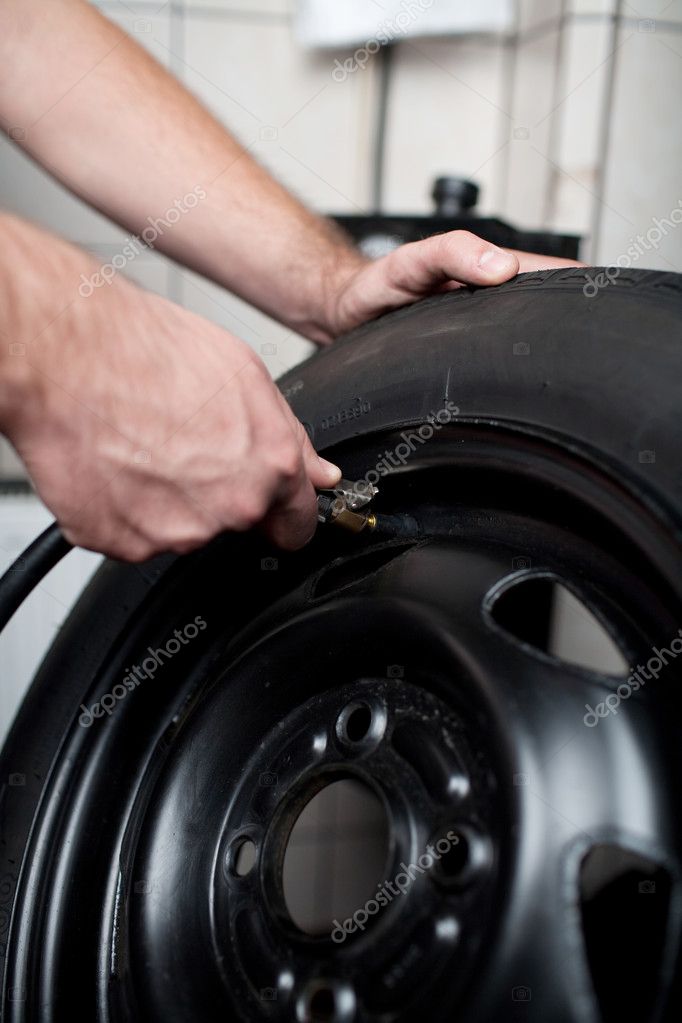
The first rule of safety when going downhill downhill is to hold on and control the direction of travel. The most comfortable way is sitting. The slope angle of the route should be no more than 20-30 degrees, do not take risks on the ice, but look for snow cover. Since the cheesecake easily goes into rotation around its axis, in the event of a collision, it abruptly changes its trajectory and can fly out of the knurled surface.
Subject to the basic conditions, skiing will bring only joy. The advantages of this particular type is soft sliding, convenience and safety.
If you want to jump from numerous ski jumps, then you should think about skiing or snowboarding. Inflatable sleds are not suitable for such tricks. Although they develop great speed on steep and icy slopes, they are difficult to maneuver, almost impossible to stop, and this poses a certain health risk. For skiing, places where there are no trees, ravines, cliffs are preferred. The passing road passing nearby is the reason for refusing fun, the bagel will not be able to stop right away.
For skiing, places where there are no trees, ravines, cliffs are preferred. The passing road passing nearby is the reason for refusing fun, the bagel will not be able to stop right away.
If the cover is damaged, it is easy to repair it yourself using glue for PVC materials. A broken chamber will have to be vulcanized. Inflatable sleds must not be towed by any means of transport. It is advisable to ride during daylight hours. In the evening you need to make sure that the visibility is good.
The easiest way is to use a pump or you can get by with improvised means, you will need any thin sharp object. A special valve prevents air from escaping after inflation. If you fix it with a knitting needle, a rod or an ordinary match and lightly press on the side, then the process will go quickly enough. Then just roll up the circle and put it in a bag or bag. It should not be left half deflated. The cover will fade, and in some places will darken from contact with rubber.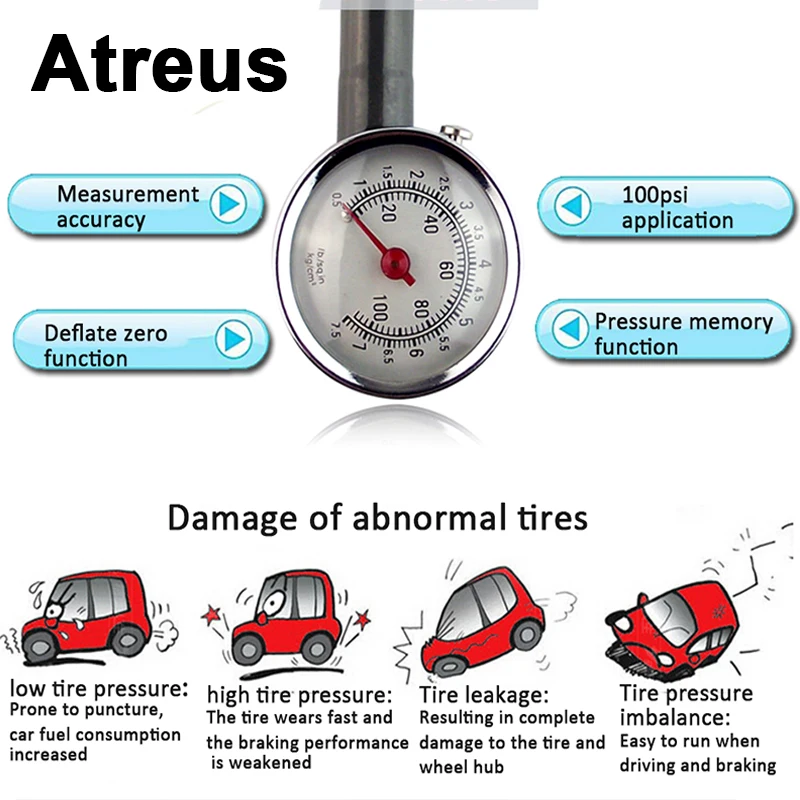
Even with such a simple design, where there are no rigid frame parts, it is possible to extend or significantly shorten the life of an inflatable sled. Depending on how to store the camera from the winter cheesecake in the summer, it depends on whether it will hit the snowy track next year or whether you will have to buy a new one.
To maintain the original qualities it is necessary:
After the end of the season, thoroughly wipe the surface, in case of severe contamination, washing with soap is allowed, and then completely dry all the elements naturally.
Blow off in any way, divide into components and put in a box or bag. Sometimes it is worth saving the packaging in which the product was sold and using it.
Eliminate access to direct sunlight, since synthetic materials are very sensitive to ultraviolet radiation and in this case it is better to store the tubing in the garage.
One of the most important indicators is humidity, which will lead to the formation of mold and spoil the belts, handles and fasteners, and dry air will provoke the appearance of cracks and it will not work to change the position later.
Considering all the subtleties, you need to choose a dark place with no windows or securely pack the components in different packages so that they do not touch and the cover does not darken, losing its elegant bright look. At the same time, throughout all seasons, it is also necessary to take care of the safety of all elements. In principle, they are quite resistant to external influences and unpretentious, but there are several nuances. It is also worth considering that a long period of lack of demand in the warm season and a short break for a thaw in the winter months require different conditions for placing inflatable sleds.
It is washed, dried and the inner chamber is deflated. In this state, it is easily pulled out through a special hole. It must be rolled up and placed in any convenient box or plastic bag. It is advisable to hang the cover by the handle or the towing strap in a place where sunlight cannot reach, otherwise the material will burn out.
In this state, it is easily pulled out through a special hole. It must be rolled up and placed in any convenient box or plastic bag. It is advisable to hang the cover by the handle or the towing strap in a place where sunlight cannot reach, otherwise the material will burn out.
How to keep in the cold season
During the period of warming, you do not want to remove the tubing far in the hope of good weather for walking. After use, the surface must be washed when necessary, but only with ordinary soapy water. It is not recommended to do this with household chemicals, as it dries out, which can cause cracks and discoloration.
In order for the sled to be within reach throughout the season, it is worth considering how best to store a cheesecake for skiing in the winter in a house or apartment, choosing a suitable place for this. As an option, you can consider a pantry, a mezzanine, a corner in the corridor, it all depends on the layout of the premises and their occupancy.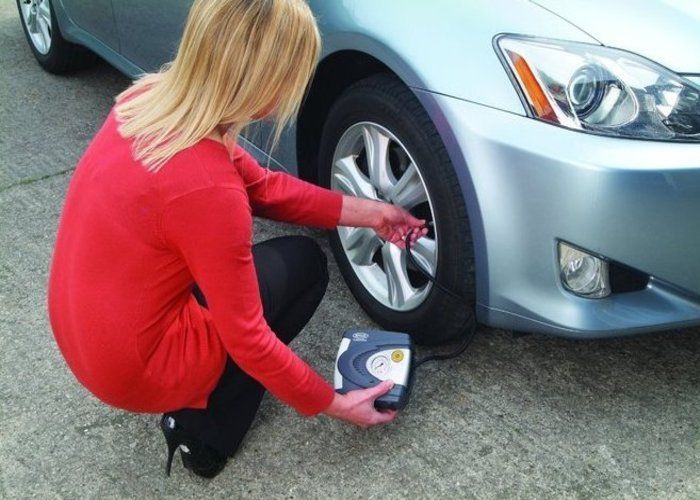
Important: upon returning home from a walk, it is recommended to slightly lower the circle so that it does not deform and damage from a sharp temperature drop.
To increase the service life, certain rules are followed. They are the same for both automotive and tubing models. It is worth considering that air and ultraviolet light age rubber, so it is advisable to put it in a dark plastic bag. When folding, avoid large folds. Also, avoid condensation, which promotes mold.
Another important point concerns how to store a cheesecake after winter in the summer - do not put a bag or box with it near heating appliances and in drafts. It has been proven in practice that at temperatures below 0 and above +40°C, rubber quickly loses elasticity, dries out and cracks, and at a humidity of 80–90% moisture penetrates into micropores, corrosion of internal elements begins. The optimum temperature range is from +5 to +25°C. The room requires periodic ventilation, but not during a thunderstorm, when there is a significant concentration of ozone in the air. Do not allow oil, gasoline, kerosene, acids and other corrosive substances to enter.
The room requires periodic ventilation, but not during a thunderstorm, when there is a significant concentration of ozone in the air. Do not allow oil, gasoline, kerosene, acids and other corrosive substances to enter.
If the defect occurs at the cover, then it is simply sewn up with the imposition of a piece of towing belt or synthetic tape. This can be done manually or on a special machine. It is better to replace the zipper with a workshop specialist or remake the fastener for lacing. Sometimes the seams on the seat diverge. They are also easy to pull off with a fishing line or thin twine.
If the camera is damaged, then the task is a little more difficult. You need to find a puncture or cut. When they are not visible visually, the circle is placed in a container of water, you can take a bath or a wide basin and look where the air bubbles come from. This place is marked and the size of the damage is determined. Repairs are not delayed for a long time, with small defects, glue for PVC is enough, with significant damage, a special patch is used.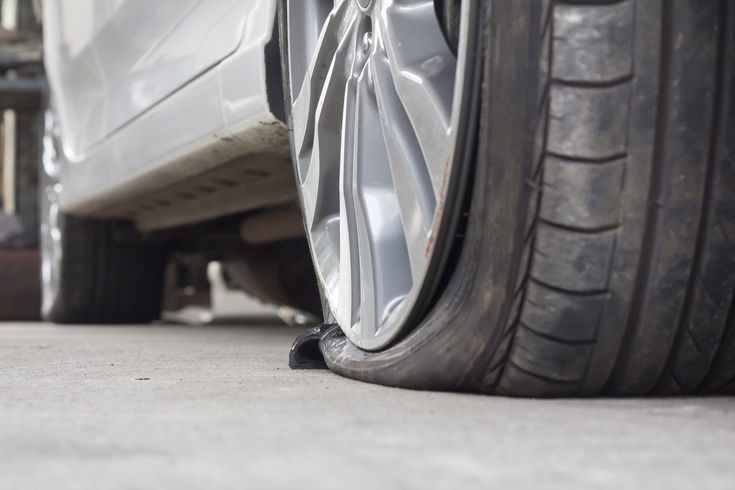 Before determining where and how to store a children's inflatable cheesecake in the summer, carefully check it and eliminate all the shortcomings so that you do not have to do it later at the beginning of the winter season.
Before determining where and how to store a children's inflatable cheesecake in the summer, carefully check it and eliminate all the shortcomings so that you do not have to do it later at the beginning of the winter season.
Most often appear:
A bursting camera, if several people ride at the same time and the allowable weight is significantly exceeded.
The cause of a cut cover is equally the riding on an unprepared track or sharp objects in the pockets of the rider.
Breakage of handles or a towing cable is much less common, most likely, this is a factory defect or deterioration of an inflatable sled, although their service life is quite long.
The divergence of the joints indicates that the circle is inflated too much and it is undesirable to store it in this form.
It is possible to fix all these defects on your own, but you need to take into account that once glued rubber will no longer have basic strength, and if it bursts, you can simply buy a suitable diameter in a car store and continue to ride with pleasure.
During the restoration, the site of damage is cleaned with fine sandpaper, degreased with alcohol, and the length of the cut is measured. The patch should be 2 cm larger. The sharp edges are given a semi-oval shape. Glue is applied both to the base and to the cut piece, both objects are heated with a hair dryer, after which they are combined and a load is placed on this area for 5–7 hours to secure the fixation. You can use it within a day.
Winter time is a great period for active games and entertainment, including riding a cheesecake from the slides. With the onset of spring, it is worthwhile to determine in advance how to store the tubing after operation in the summer to choose so that it lasts for several more years. If you follow some simple rules, this is quite realistic.
content
Move the switch on the back of the pump to the up position and slide the air pump out of the valve. Press the tip of the valve to deflate the tire. Holding the plug after loosening it will force the air out of the tire.
Press the tip of the valve to deflate the tire. Holding the plug after loosening it will force the air out of the tire.
Typically tire pressure loss is estimated at one bar per month. To avoid risks, it is advisable to always check it before every outing. Use the pump pressure gauge to check. If necessary, inflate the tires to always maintain proper pressure.
This pressure difference can be 15-20%, meaning if you inflate your tires to 100 psi, the tire that gets the least weight should be inflated between 80 and 85 psi. Poor tire pressure can cause the tire to wear faster, requiring an earlier replacement.
Mountain bike tire pressure chart
| Tire width (inches) | ||
|---|---|---|
| 60 kg | 2 bar / 29 psi | 1.9 bar / 27 psi |
| 70 kg | 2. 1 bar / 30 psi 1 bar / 30 psi | 2 bar / 29 psi |
| 80 kg | 2.2 bar / 32 psi | 2.1 bar / 30 psi |
| 90 kg | 2.3 bar / 33 psi | 2.2 bar / 32 psi |
It usually takes about a year for a tire to lose its minimum safe pressure, but if our car has been exposed to extreme temperatures and the situation suddenly changes, the porosity can increase and lose more air than usual.
Most tires should be around 2.1 to 2.4 atmospheres, but always check the car's paperwork to be sure.
Trust us, you'll be happy to see your progress and you'll stay motivated, so keep these tips in mind so you don't get tired on your bike and give up.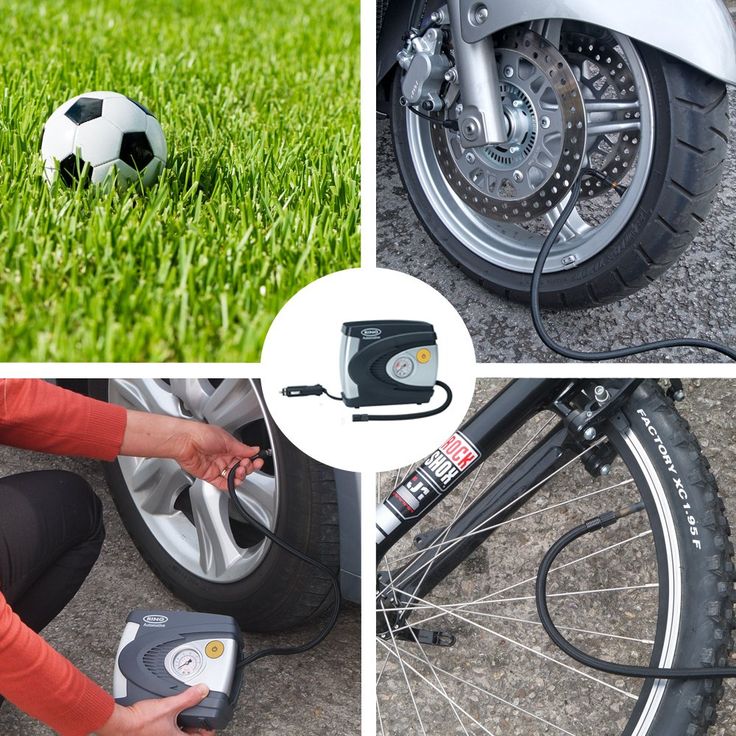
When there is too much air in the tire, the inflation pressure is higher than recommended by the manufacturer, which reduces the tire's contact surface with the road surface. Therefore: Reduces adherence. Wear is more visible in the center of the tread.
Insufficient tire pressure.
Too high pressure reduces tire grip; too low pressure allows the tube to pinch on impact (on a pothole, on a step), and rubbing the rubber against itself often causes holes in the tube.
A good guide can be for thin tires (less than 2. 2) and with a chamber around 2.1 or 2 bar pressure and for wide tires (over 2.2) and also with a chamber around 1.9-2 bar.
2) and with a chamber around 2.1 or 2 bar pressure and for wide tires (over 2.2) and also with a chamber around 1.9-2 bar.
Traditional or mountain bikes with 26" to 28" wheels withstand 2.5 to 4.5 bar. Road bikes with 29-inch wheels can handle 7 to 9 handlebars.
For example: "26×1.5 45-60" psi means that this wheel has a rim diameter of 26 (in) and a width of 1.5 (in) and the recommended air pressure is between 45 and 60 psi.
Wide chamber tires (2.3 and up): 28 to 30 psi - 1.9 to 2.1 BAR. Wide tubeless tires (2.3 and up): 26 to 28 psi - 1.7 to 1.9 BAR. Thin tubeless tires (2.25 or less): 27 to 28 psi - 1. 8 to 1.9 bar. Fat bike tires (4.0 and up): 7.5 to 22 psi - 0.5 to 1.5 bar.
8 to 1.9 bar. Fat bike tires (4.0 and up): 7.5 to 22 psi - 0.5 to 1.5 bar.
What does psi mean? This abbreviation stands for pounds-force per square inch, abbreviated psi for "pound-force per square inch", which is the Imperial or Anglo-Saxon unit of pressure.
AT 65 psi COLD" indicates the maximum tire load range and the corresponding maximum cold pressure.
In fact, continuing to drive on a flat tire means inexorably damaging the tire itself, which can be repaired at little cost. But that's not all: in addition to rubber, after a short time, the rim, on which the weight of the car will be unloaded, will also be damaged.
flat tire
You will notice how it wears, especially if it takes time at less pressure than recommended.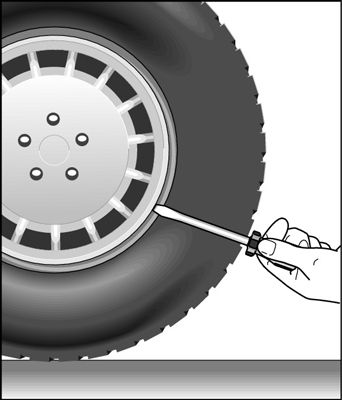 Transportation of a tire in a flat state increases the wear of its outer edges, the shoulder areas of the tire. You will also notice that the tire is hotter than the others.
Transportation of a tire in a flat state increases the wear of its outer edges, the shoulder areas of the tire. You will also notice that the tire is hotter than the others.
Other problematic consequences of running with flat tires are hydroplaning that occurs whenever you drive through a flooded area, the risk of losing a rim, more tire heat and longer braking distances.
With these rules, you can't go wrong by more than a tenth, and on the road, not a tenth matters in grip or feel. The answer to the second question is: wait 15 minutes and the tire will be ready for cold pressure.
The first thing to look at is the fuel cap. Many times the pressure has been indicated on the inside of this little door. Secondly, if you can't find it on the cover, look at the inner frame of the driver's door.
Here are the best tips for proper pedaling.
“It is recommended to eat carbohydrates such as pasta, rice, potatoes, bread, legumes at least two and a half hours before cycling,” says Barcenas. The theory is that this type of food is quickly digested and provides the body with the energy needed for pedaling.
It is best to take "simple" carbohydrates quickly absorbed, which quickly enter the bloodstream and allow you to regulate insulin levels. These carbohydrates can be found in fruits, nuts, or juices.
These carbohydrates can be found in fruits, nuts, or juices.
Low tire pressure also affects the vehicle's behavior when cornering. In cases where the front wheels are flat, the car tends to understeer; that is, it cannot maintain the desired trajectory and tends to lose the line outward.
When the air pressure is below the manufacturer's recommended pressure, tires will under-inflate. This can happen, for example, when the tires are subjected to very sudden temperature changes.
How to avoid a skid
There are many signs or warnings that can prevent a skid, such as curves, gravel, moisture, leaves, etc. In these cases, you must slow down, increase a safe distance, and use the brakes, accelerator, and steering smoother and more progressive.
The presence of a lump or egg in the tire is a clear sign that the inner layers have suffered irreparable damage, it is the inner part of the tire, the radial structure that has undergone a rupture. The tire is supported by air or nitrogen pressure (better than the latter).
The tire is supported by air or nitrogen pressure (better than the latter).
Be aware that tires can lose air due to differential pressure, this effect is called the permeation process and affects all tires, regardless of type or application, since the joints that make up the tire are not completely sealed, and their porosity allows ...
PSI (pounds per square inch) is a unit of pressure that is equal to 1 psi.
Starting point for a cyclist weighing 70 kg.
| bike type | Cover width | Tire pressure in psi |
|---|---|---|
| trekking bike | 35 mm | 65 |
| trekking bike | 40 mm | 58 |
| trekking bike | 50 mm | 44 |
| Road bike | 25 mm | 100 |
The PSI value in pressure refers to pounds per square inch (pounds per square inch, as it is abbreviated in English). It is one of the most commonly used units of pressure, although not the only one: other units are used, such as the bar, which is equivalent to 14.5 pounds.
It is one of the most commonly used units of pressure, although not the only one: other units are used, such as the bar, which is equivalent to 14.5 pounds.
START POINT FOR 70KG CYCLIST
| bike type | tire width | Tire pressure in PSI |
|---|---|---|
| trekking bike | 40 mm | 58 |
| trekking bike | 50 mm | 44 |
| Road bike | 25 mm | 100 |
| Road bike | 28 mm | 87 |
Tires 27.5+ (2.8 and up): 12 to 27 psi - 0.8 to 1.8 bar. Tires on wide rims (25 mm internal or more): 1.5 to 4.5 psi - 0.1 to 0.3 bar less than conventional rims.
1 bar = 100.000 1.01972 Pa = 2 kgf/cmXNUMX.
The PSI value corresponds to its name in English Pound-force per Square Inch, which in Spanish translates as pounds per square inch. It is the most widely used unit of tire pressure, especially in English-speaking territories.
It is the most widely used unit of tire pressure, especially in English-speaking territories.
Note: 35 psi is the air pressure assigned to "maximum load" tires with "standard" load, and 41 psi. inch for tires with "extra load".
Regular wheels usually have a recommended pressure of 30-35 psi, while most aftermarkets recommend around 60 psi.
To find out what air pressure is right for your tires, read your vehicle manufacturer's manual, on the sticker on the driver's door frame or in the glove box.
Due to the recent explosions of gasoline, we do not have time to waste even one drop of hydrocarbon, so you should consider that experts in this field agree that: up to 13, from 26 to 14, from 28 to 15, from 30 to 16 and from 35 to ...
Move the switch on the back of the pump to the up position and slide the air pump out of the valve. Press the tip of the valve to deflate the tire. Holding the plug after loosening it will force the air out of the tire.
Press the tip of the valve to deflate the tire. Holding the plug after loosening it will force the air out of the tire.
The best thing in these cases is to put the vulcanized patch inside, a quick and safe repair, that is, in a workshop, that after a while the tires can lose air and be damaged, of course...
How much does it cost to fix a flat tire? While you might think that puncture repair can be expensive, it is actually one of the cheapest auto repair services. The price usually ranges from 6 to 20 euros, although they are usually around 10 euros.
The correct pressure will be no more than 9.5 bar, which is the maximum value to which we must inflate our tubes. Pressure around 8-9the bar is what maximizes our ratio between friction and grip.
Folding bikes with 16" to 20" wheels are typically 60 to 120 psi (4 to 8 bar) compared to 35 to 65 psi (2.